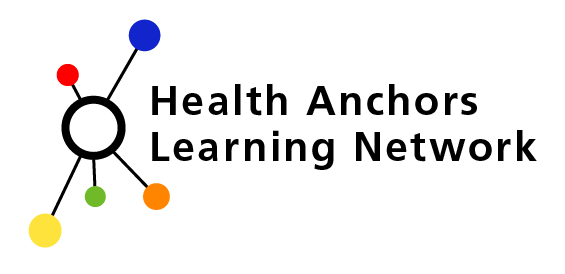Behind the scenes at HALN - what have we achieved and what’s next?
Jenna Collins, Programme Manager, The Health Foundation
Hebba Nasser, Programme Officer, The Health Foundation
This blog is part of a two-part reflective series, and can be read alongside Two Years of Learning (document downloadable here), which was written by the HALN team.
The HALN journey so far
In 2019, the Health Foundation report ‘Building Healthier Communities’ proposed the idea of a learning network to support the NHS to explore its role as an anchor institution. Inspired by the US Healthcare Anchor Network, it was an idea the Health Foundation and NHS England committed to delivering in the Long Term Plan.
It barely seems like yesterday, let alone two and a half years ago, that colleagues from the Health Foundation, NHS England, and the Innovation Unit sat on one of many Zoom calls trying to figure out how we would make The Health Anchors Learning Network (HALN) a reality.
A two-year programme to set up a UK-wide learning network was quite an ambitious task, but I think we’ve managed to create something quite special:
1600 participants from across the UK, from across health and care and beyond, have signed up to be part of the network to learn from and connect with peers
Over 1500 people have attended HALN events, of which there have been many, which you can catch up with here
HALN resources have been downloaded almost 1,300 times; learning that has been generated by participants and expertly synthesised and summarised by the Innovation Unit.
What we’re learning
Underneath the headline HALN achievements lies an immense amount of learning and insight.
At the beginning, the concept of the NHS anchor institution felt relatively new, with pockets of interesting work happening. Today, we see innovative anchor work being embedded across the UK at a local, regional and national level; regional and local anchor collaborations, charters and frameworks; and we see NHS organisations creating anchor impact, contributing to social and economic development and benefiting communities beyond the health care services they provide. This momentum has shaped our understanding of what it really means for the NHS to embrace its role as an anchor; and an appreciation of the leadership and resources it requires too.
At the Health Foundation, we’ve been particularly reflecting on:
What it takes to support a space for learning and collaboration when anchors as a topic is broad, and its interpretation and application are evolving. It can be hard to keep up with what ‘good’ looks like and what being an anchor means for different people and organisations. But ultimately, we’ve learned to embrace this; the diversity and openness of the HALN membership means it’s well-placed to include multiple views and perspectives on what it means and takes to be an anchor.
As the diversity of organisations doing anchor work grows, working in partnership has and will continue to be fundamental to delivery. It’s been great to see organisations from across health and care, from hospitals, to Primary Care Networks and ambulance trusts join the network and consider their role as anchor organisations, along with Integrated Care Systems, and other regional and national bodies. As the HALN heads into its third year, thinking about how we can support collaboration around anchor learning with health anchors and organisations such as local authorities, housing, universities, community organisations and businesses, will be crucial.
Reducing health inequalities sits at the heart of what it means to be an anchor. It can be easy to lose sight of that when delving into anchor topics such as procurement, estates, or sustainability. But what makes the anchor movement a compelling concept is the laser focus and intentionality of using resource and assets to make a meaningful difference on the wider determinants of health, increasing equity and ultimately supporting health outcomes for all.
An independent evaluator has been helping us make sense of our learning from the last two years, capturing where the HALN has made a difference, and areas where we can improve. Thank you to all those who have been involved in this process and we’re looking forward to sharing these findings with you over the coming months.
The HALN in 2023
It’s been great to bring the concept to life and deliver the HALN in partnership with NHS England. As mentioned, two years to create a network was ambitious and it feels like the HALN – alongside the broader anchor agenda – is really starting to gather momentum. 2023 is set to be an exciting year.
The Health Foundation will continue to fund the network this year, working with the Innovation Unit to build on its achievements and apply the lessons from the evaluation. We’re particularly excited by the opportunities to connect the network to the wider portfolio of exciting Health Foundation work focusing on health inequalities and the wider determinants of health.
For HALN participants, there are more events, learning sets and resources in the pipeline, and all are welcome to get involved. Specifically, participants can look forward to:
A new resource on leading anchor work, taking the inspirational learning from the recent event At the Helm: the role of leadership in health anchor work, and building on the existing resource on leadership
Another round of learning sets, giving opportunities for in-depth learning and collaboration between peers. Sign up by 5th February here.
Continued sharing of learning and examples from anchors more advanced on their anchor journey, with colleagues who are just starting out. You can read recent case studies here.
You’ll hear more in the coming months about learning from the last two years of HALN and what’s coming next. The HALN is one boat in a growing and diverse flotilla of anchor activity, we can’t wait to see what it can achieve in 2023.
